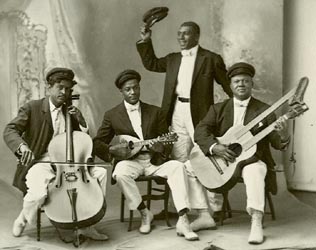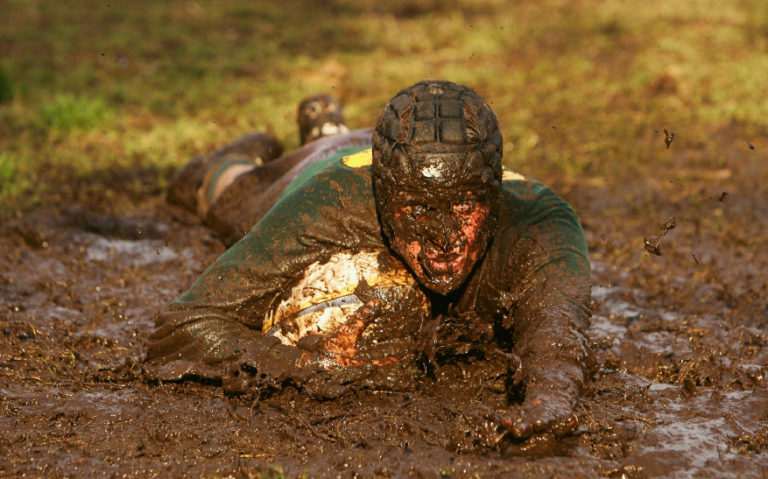First lady of bass

Don’t you just love thumping bass lines, bass lines that punch you in the guts, slap you around the head and slam you up against the wall. Scotland’s Jack Bruce, with that cream of rock power trios, Cream, it seems to me, was first to crank up the bass into another dimension. Jack Bruce was the first to put the intricacies of dynamic bass playing under the rock spotlight, back in 1966.
Jack played bass like a lead guitar, they said. On hearing Bruce for the first time, Cream guitarist, Eric Clapton, said “My life was never the same again.” Nor was rock or, to be more precise, blues rock. It was Cream who opened the door to pioneering heavy metal mega bands like Led Zeppelin, Black Sabbath and Deep Purple.

For a while there in the late 60s, Jack Bruce shared top spot on many of the various ‘World’s Best Bassist’ polls with Paul McCartney, no slouch himself when it come to fingering four strings. Totally underrated when playing bass for the Beatles, McCartney had the rare talent of being able to sing complicated lyric melodies while at the same time laying down his driving bass lines. This is not an easy thing to do. And never have McCartney’s skills on the bass been more evident than on that seemingly simple Wings ditty, ‘Silly Love Songs’. Like it or loath it, you have to admit that Fab Macca’s bass playing on that song is sublime. It drives the song along so brilliantly, there’s no need for other instruments, just McCartney’s pulsating bass.
As Sting once said about playing bass, “Paul McCartney is the guv’nor.”

But if Brits like Jack Bruce and Paul McCartney are the masters of the bass guitar, the mistress is surely the American, Carol Kaye. Beach Boy Brian Wilson and all-round musical genius Quincy Jones have both called Carol Kaye the greatest bassist in the world. It’s been estimated the 81-year-old has played on over 10,000 recordings, for hundreds of artists as diverse as Franks Sinatra and Zappa, to the Doors and Phil Spector.
It’s Carol’s intense solo bass line reverberating on the Spector produced ‘River Deep, Mountain High’ for Tina Turner. As much as I admire his work, I haven’t credited Ike Turner on that seminal song because, I believe, Ike had absolutely nothing to do with it. Phil Spector simply put Ike’s name on the record to shut him up and/or for contractual reasons. Tell me if I’m wrong!
The Carol Kaye sound was an integral part of Phil Spector’s famous Wall of Sound. It helped form the Beach Boys’ ‘Pet Sounds’, including the classics, ‘Wouldn’t It Be Nice’ and ‘Sloop John B’. The Carol Kaye sound rescued Sonny and Cher’s ‘The Beat Goes On’, with a bouncy lick in F.
Says Michael Molenda of America’s Bass Player magazine, “Carol’s genius was to look at extremely basic songs and figure out a way to make them interesting. She’d listen to the musicians and just find that hooky, memorable bass line to drive there song forward.”

After hearing Pet Sounds for the first time in 1966, Paul McCartney told how the album’s bass lines helped inspire the Beatles’ magnum opus, ‘Sgt. Pepper’s Lonely Hearts Club Band’. But they weren’t the Beach Boys’ bass lines, of course. They were Carol Kaye’s. It was a case of rock’s young bass master hailing rock’s bass mistress.
Born around 1935 to musician parents near the Canadian border in Washington State, Carol Kaye moved with her parents to Los Angeles in 1939 and was teaching guitar professionally by the age of 14. She was so good, Carol was soon playing complicated fast-tempo bebop guitar in LA jazz clubs, in bands backing big name artists like comedian Lenny Bruce.
In 1957, Carol Kaye played guitar on Sam Cooke’s minor hit single, ‘Summertime’, making more in a few hours in the studio than she could earn in a week playing jazz in nightclubs. More guitar session work followed until one day a bassist failed to show for a session. Kaye stepped in and her career exploded from there. She played bass on Ricky Valens’ ‘La Bamba’ and on ‘Then He Kissed Me’ by The Crystals. That’s Carol on Nancy Sinatra’s ‘These Boots Are Made For Walking’. She played bass for Simon & Garfunkel during their wonder years; played on ‘Good Vibrations’ for the Beach Boys; on Glen Campbell’s ‘Wichita Lineman’, on “You’ve Got That Loving Feeling’ for the Righteous Brothers, for Barbra Streisand on ‘The Way We Were’, for Ike Turner, for Joe Cocker, and on various Monkees’ hits. Who didn’t she play for? Carol Kaye played bass on many of the most important hits of the twentieth century. Indeed Carol Kaye is the most recorded bassist in history.
By 1965, Kaye estimates she was earning $10,000 a week in today’s money. But in 1969, her life spiralled out of control. In a two week span, both her fiancee and a former husband died. Her house was robbed. She was in a car accident. Most frightening of all, Charles Manson, whom she knew through Brian Wilson, went on the killing spree that slaughtered actress Sharon Tate and four others.
“Everybody got scared,” she said. “We pulled our names and phone numbers out of the union books so fast.”

Her career changed. She published her book “How to Play the Electric Bass” and a further 30 educational bass books and courses. She’s taught at universities and colleges, written for bass magazines and won too many awards to list – a bit like the number of hits and famous TV soundtracks she’s been responsible for. Oh go on then: M*A*S*H, Mission Impossible, The Cosby Show, Bonanza, The Adams Family, Kojak, Get Smart … they just go on and on.
Today, Carol Kaye lives in semi-retirement on the edge of California’s Mojave desert. It’s not for nothing she was the subject of a 2004 documentary “First Lady of Bass”.
She no longer makes records but the records she has made will live on. Hopefully, this little post will help, in some small way, to make sure the name Carol Kaye, queen of the bass guitar, lives on too.






I really enjoyed this homage to my bass heroine, thank you.
You’re very welcome, Pete. Many thanks for your feedback.